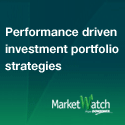ETFs or Exchange Traded Funds resemble a closed-end mutual fund. A mutual fund represents an investment vehicle that pools funds from various investors and invests in a basket of stocks, bonds, money-market instruments, currencies and other securities. In a closed-end mutual fund, the total number of shares of the fund is fixed and the shares are traded on a stock exchange, just like equities. In addition, after the initial offering of shares, additional fund shares can only be acquired by another fund owner and share prices are determined by supply and demand, not by net asset value. In contrast, an open-end fund issues new shares at market close and repurchases shares from investors that wish to leave the fund.
ETFs represent a combination of the characteristics of a typical mutual fund and a closed-end mutual fund. ETFs highly resemble closed-end mutual funds: they are traded on a stock exchange; however ETFs are traded at prices that approximate the ETFs net asset value, instead of prices that are determined by supply and demand conditions. ETFs are relatively new instruments as the first ETF was introduced in the United States in 1993. The majority of ETFs are index funds tracking stock market indices. Other types of ETFs include bond, currency, commodity and leveraged ETFs.
Why should you invest in ETF?
There are many benefits of investing in an ETF vs. a traditional stock or a traditional mutual fund. Some of the benefits are outlined below.
The majority of ETFs have a lower management expense ratio (MER) than comparable mutual funds. Mutual funds usually charge 1% to 3% while ETFs come in the 0.2% to 1% range. Depending on your investment horizon, the cost differential can add up to a significant difference over the longer term. The reason ETFs have a lover MER is because they are more cost efficient compared to traditional mutual funds, which are continuously issuing and redeeming shares, in addition to continuously buying and selling securities to maintain liquidity positions. As the total number of shares in ETFs is fixed, they donât incur the same trading costs and thus have lower management expenses.
ETFs provide diversification. There are hundreds of ETFs available, from ETFs that cover major stock indices (Dow Jones, S&P, Nasdaq) to international and fixed income ETFs.
ETFs offer foreign investors who are for regulatory reasons limited in their ability to invest in United States mutual funds the opportunity to invest in a mutual fund-like instrument.
{ 1 comments }





